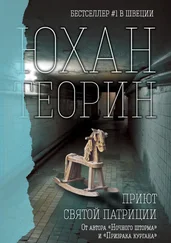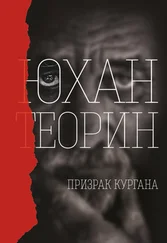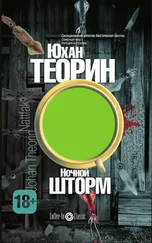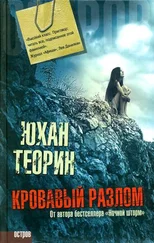Johan Theorin
The Voices Beyond
The ghost ship came gliding out of the darkness across the black waters of the Sound, giving way to nothing and no one.
The boy in the rubber dinghy didn’t have time to get away when the ship suddenly appeared. His small inflatable craft almost capsized in the collision, but at the very last moment he managed to pull close to the steel hull and throw a line around the gunwale.
The ship loomed above him. It was oily and rusty, as if it had been sailing the seven seas for many years. Nothing was moving on deck, but deep inside he could hear the throbbing of an engine, like the beating of a heart.
The dinghy had been damaged and was letting in water, so the boy had no choice. He reached up to the gunwale and clambered aboard.
Cautiously, he climbed over and down on to the dark deck; there was a powerful stench of rotten fish.
Slowly, he crept forward, along the side of a closed hatch.
After only five or six metres he saw the first dead man. A seaman dressed in filthy dungarees, lying on his back and staring blankly up at the night sky.
Then more seamen came staggering out of the darkness towards him — dying or already dead. Yet still alive. They reached out to him, spoke to him in weak voices, in some foreign language.
The boy screamed and tried to flee.
Thus began the last summer of the twentieth century in the village of Stenvik.
And thus began the story of the ghost that haunted the village.
Or perhaps it all began some seventy years earlier, in a small inland churchyard. With another young man, Gerlof Davidsson, who heard the sound of someone knocking loudly from inside a coffin.
Gerlof Davidsson left school at the age of fourteen, and went to sea as a boy sailor two years later. In between, he worked on the island of Öland, when he wasn’t helping out on the family smallholding. Some of the jobs he did were good, some less so. The only one that ended badly was his stint as a gravedigger in Marnäs churchyard.
As long as he lived, Gerlof would remember his last day there, when Edvard Kloss the farmer had to be buried twice. Even when he was an old man, Gerlof still had no explanation for what had happened.
He liked ghost stories, but he had never believed in them. Nor did he believe in vengeance from beyond the grave. And Gerlof would normally have associated words like ‘ghost’ or ‘phantom’ with darkness and unhappiness.
Not with sunshine and a summer’s day.
It was a Sunday in the middle of June, and Gerlof had borrowed his father’s big bike so that he could cycle up to the church. He could manage it now; he had shot up over the past year and caught up with his tall father.
Gerlof bowed his head and pedalled away from the village on the coast, wearing a thin white shirt with his sleeves rolled up. He was heading east, inland. Blue viper’s bugloss and purple alliums bloomed alongside the straight dirt track, with juniper and hazel bushes behind; in the distance on the horizon he could just see the sails of a couple of windmills. Cows were grazing in the meadows, and the sheep were bleating. Twice, he had to jump down to open the wide gates that kept the cattle safely enclosed.
The landscape was vast and open, almost treeless, and when the swallows swept past his bicycle and soared up towards the sun, Gerlof just wanted to leave the track and head off into the wind and freedom.
Then he thought about the task that awaited him, and a little of the joy went out of the day.
Edvard Kloss had been sixty-two years old when he died the previous week, a solid, well-established farmer. Kloss was regarded as well off in northern Öland; he didn’t have a great deal in terms of money, but was rich in land along the coast south of Stenvik, Gerlof’s village.
‘Taken suddenly, sadly missed by everyone,’ as Gerlof had read in his death notice. Kloss had died during the construction of a large wooden barn. Late one night, a newly erected wall had fallen on him.
But was he really sadly missed by everyone? There were plenty of stories about Kloss, and the accident that had caused his death had yet to be fully explained. His younger brothers Sigfrid and Gilbert were the only ones who had been there that night, and each blamed the other. Sigfrid insisted that he had been out of sight over by the piles of timber when the wall came down, but claimed that Gilbert had been right by the barn when their brother died. According to Gilbert, it was the other way round. In addition, a neighbour said he had heard loud voices from the construction site that night, voices he didn’t recognize.
Gerlof was pleased to see that there was no sign of the brothers when he reached the churchyard and propped his bike against the wall. He suspected this was going to be a grim burial.
It was only half past eight in the morning, but the sun was already blazing down on the grass and the graves. The whitewashed stone church, built like a fortified castle with thick walls, rose up against the blue sky. The muted sound of a bell echoed across the flat landscape from the western tower, tolling for the deceased.
Gerlof opened the wooden gate and made his way among the graves. The hut that served as a mortuary was over on the left.
There was a myling sitting behind it.
At first, Gerlof couldn’t believe his eyes: was he really seeing a myling, the restless ghost of an unbaptized child? He blinked, but the child was still there.
It was a boy, a few years younger than Gerlof. He was extremely pale, as if he had spent the entire spring locked in an earth cellar. He was crouching down with his back to the mortuary, barefoot and dressed in a white shirt and light-coloured short trousers. The only thing about him that wasn’t pale was a long, dark scratch across his forehead.
‘Davidsson! Over here!’
Gerlof turned his head and saw Roland Bengtsson, the gravedigger, waving to him over by the churchyard wall.
Gerlof set off towards him, but glanced back at the boy. He was still there. Gerlof didn’t recognize him and was puzzled by his pallor, but at least he wasn’t a ghost.
Bengtsson was waiting for Gerlof with a couple of iron spades. He was a tall man with a permanent stoop; he had tanned, sinewy arms and a firm handshake.
‘Good morning, Davidsson,’ he said cheerfully. ‘That’s where we’re digging.’
Gerlof saw that a broad rectangle of turf had been removed over by the wall. Edvard Kloss’s grave. When they reached the plot, Bengtsson asked quietly, ‘How about a cold beer before we start?’
He nodded towards the wide wall behind them, where a couple of brown bottles were waiting on the grass. Gerlof knew that Bengtsson’s wife was a Good Templar and presumed that the gravedigger drank beer while he was working because he wasn’t allowed to do so at home.
Gerlof could see that the bottles were cold and covered in condensation but, in spite of the fact that he had cycled all the way from the coast, he shook his head.
‘Not for me, thanks.’
He wasn’t all that keen on beer and wanted to be in good shape when he started digging.
Bengtsson picked up one of the bottles and looked over towards the mortuary. Gerlof noticed that the pale boy had got to his feet and was standing by one of the graves, as if he were waiting for something.
Bengtsson raised his hand.
‘Aron!’ he shouted.
The boy looked up.
‘Come over here and give us a hand, Aron! You can have twenty-five öre if you help us dig!’
The boy nodded.
‘Good,’ Bengtsson said. ‘Go to the toolshed and get yourself a spade.’
Читать дальше












